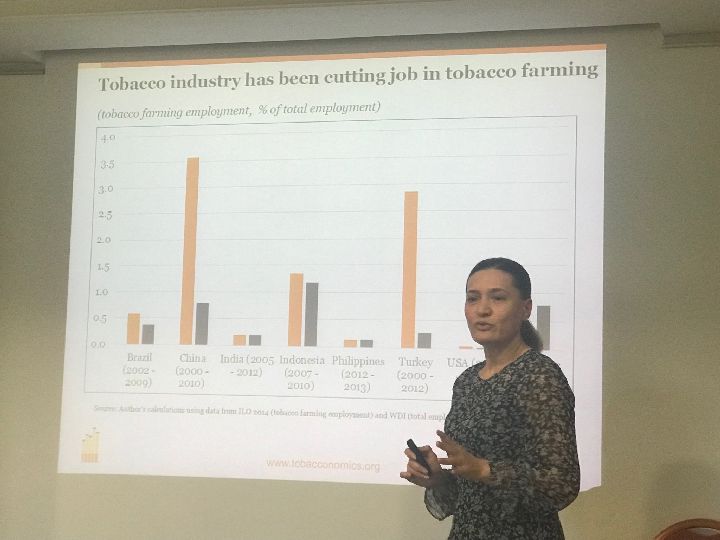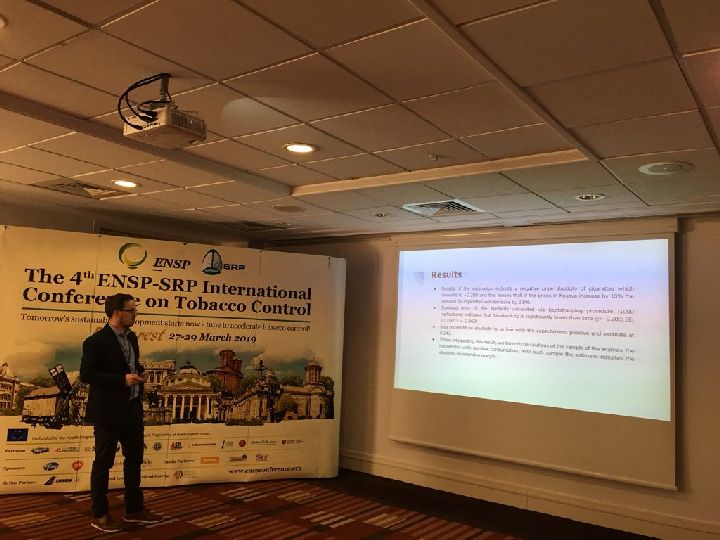Tobacconomics Research World Tour: Third Stop—Romania
The next stop on our research tour is Bucharest, Romania. From March 27-29th Tobacconomics team members participated in the 4th International Conference of the European Network for Smoking and Tobacco Prevention (ENSP). There, we were joined by seven of our think tank partners in the Southeastern Europe (SEE) consortium, which is led by the Institute of Economic Sciences (IES) in Belgrade, Serbia.
For the last 20 years, the European Network for Smoking and Tobacco Prevention (ENSP) has played an important role in setting and influencing tobacco control policies in the European region. At the conference, Tobacconomics and the SEE consortium hosted a symposium: “Partnering with Economic and Fiscal Policy Think Tanks in Producing Research to Inform Tobacco Taxation Policies.” During the symposium, Tobacconomics Senior Economist, Violeta Vulovic first presented the global evidence on socioeconomic impacts of tobacco taxation and its relevance for policy making. Additionally, Violeta broke down the impacts of tobacco taxes on employment, and showed that tobacco industry cuts jobs because of globalization and technological advances, not because of tobacco taxes.
Erika Siu, Tobacconomics Deputy Director then presented the capacity building model of our project. And, finally, Jovan Zubovic of IES presented a review of the economic research on tobacco taxation in Southeast Europe. This research from IES and the other six think tanks was published in December of last year, which included a regional policy brief and report, and country specific briefs and reports from each of the seven countries in the region.
The current prevalence of smoking in Southeast Europe is still very high. Out of the seven countries in the consortium, Montenegro has the highest smoking prevalence at 45.9%, and Albania has the lowest at 28.7%, which is still above the global and regional average (18.4%).
Based on the results of the demand price elasticity research from the think tanks, a 10% increase in tobacco prices would reduce consumption between 2.9-10% in the region. These findings indicate the necessity for a change of current policy approaches in Southeastern Europe countries. New policies, which include a dynamic increase of excises through price increases would lead to the following outcomes:
- A sharp decrease in consumption. A 10% increase in price would decrease consumption by approximately 4.4% in Croatia and 7.8% in Albania. Further, an increase in cigarette prices by 54.7% would lead to a 30.6% decrease in demand in Albania.
- An increase of tobacco tax revenues would create more fiscal space for other important tobacco control measures. In Montenegro, an increase in excise tobacco taxes from EUR 0.6 to EUR 1.0 would lead to a 12.35% increase in additional tax revenues. Similarly, in Croatia, an increase in retail price from EUR 3.6 to EUR 5.4 would generate approximately EUR 130 million in additional tax revenues.
While the findings from these country and regional reports in Southeast Europe have provided a broad perspective of tobacco taxation in the region, Zubovic noted in his remarks that much more can be done, especially through primary data collection throughout the region.
We look forward to continued research from these think tanks over the next year, and are excited to be continuing our partnership!


